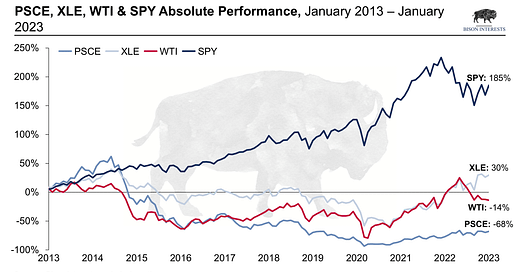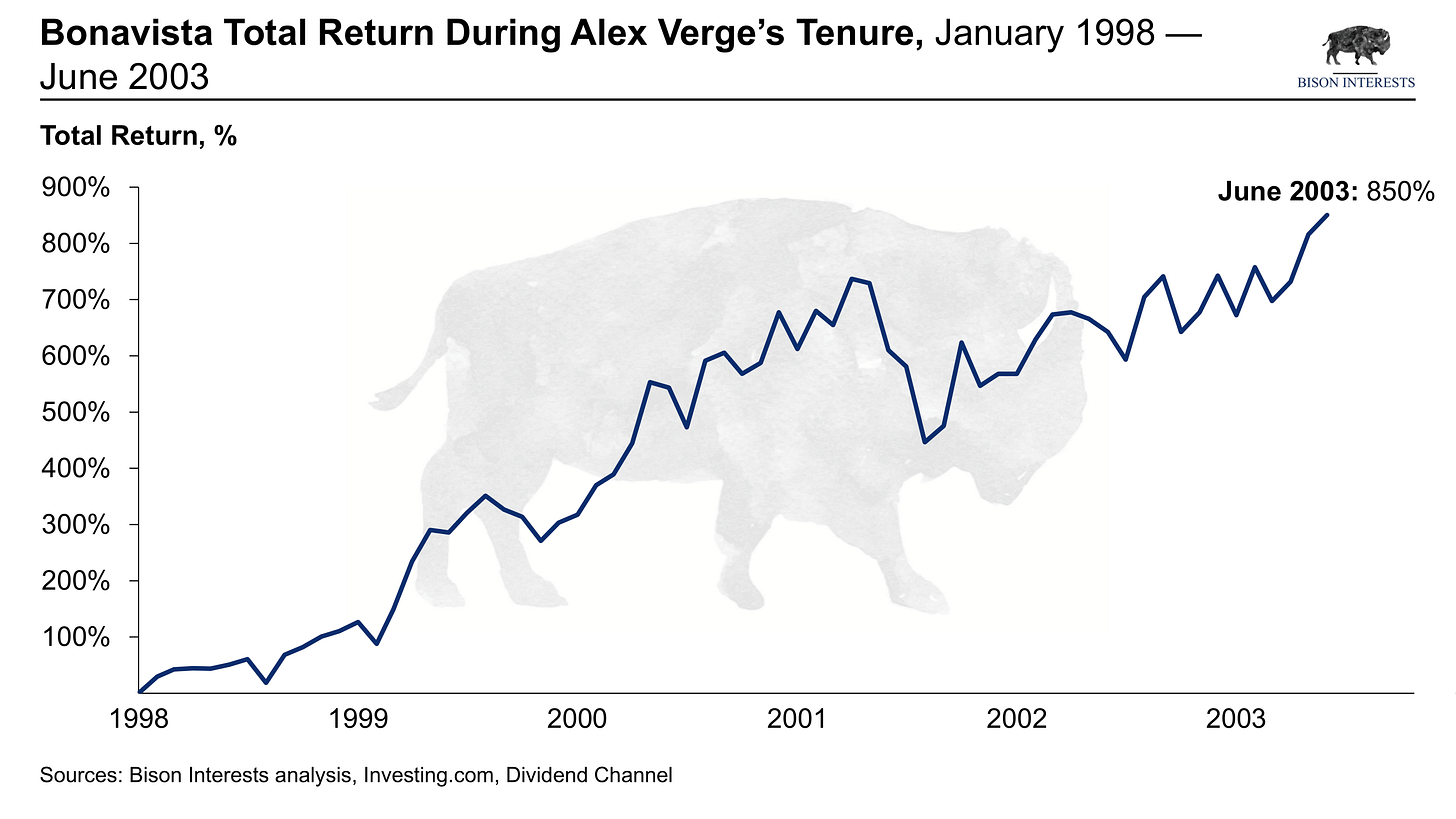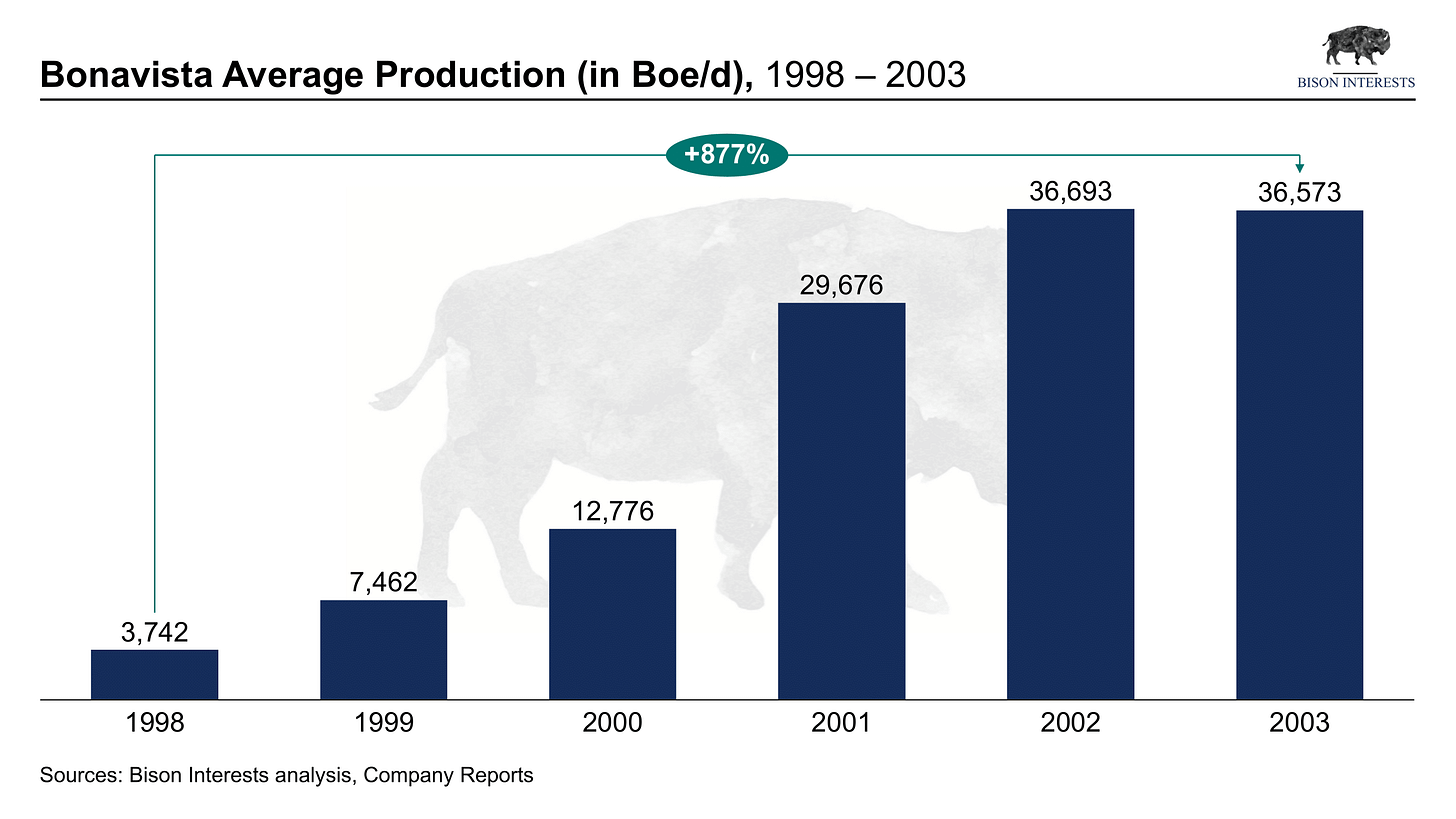Alex Verge is Bringing His Winning Formula to Journey Energy
(Important Disclaimer at the Bottom)
Business is booming for oil and gas producers. Oil prices have risen materially since their pandemic lows, and many E&Ps are now generating more cash flow than they know what to do with. Yet despite soaring free cash flow, E&P equity valuations remain depressed: a likely result of ESG driven divestment from oil and gas and shifting investor preferences.
In fact, despite currently gushing cash, oil and gas equities have meaningfully underperformed the underlying commodity and the broader market over the last 10 years! This has resulted in multiple compression as fundamentals improved - particularly for oil and gas equities with smaller market capitalizations, as seen by the SmallCap Energy ETF (PSCE) vs WTI oil, a larger cap energy index XLE, and SPY:
Uneconomic forced selling by institutions is offering an opportunity to buy quality small-cap E&Ps at rock-bottom prices, in what appears to be the early innings of an oil super-cycle. Beyond the cyclical aspect, buying at low valuations and high free cash flow offer multiple paths to a successful outcome.
Inflation and rising rates have eroded the values of longer duration growth equities, with investors recently prioritizing high free cash flow yielding investments—of which oil and gas equities are at the forefront. This re-prioritization may soon see material inflows, jolting a re-valuation up for the entire energy sector. And even if this re-rate never materializes, many low valuation companies are already returning cash flow in the form of buybacks and dividends.
With that said, there’s a plethora of inexpensive, small cap oil and gas securities on the market, and many are cheap for good reason. With many specialists having been shaken out of the sector and with limited reliable research coverage of smaller oil and gas stocks, it can be difficult to pick winners while avoiding the bad apples. Below is a primer on one of our favorite small cap oil & gas names right now: Journey Energy (TSX: JOY).
A Brief Journey Overview
Journey Energy is a deeply discounted, rapidly growing ~13,000 Boe/d Canadian oil and gas producer operating in Western Alberta. Journey’s valuation screens at the low end of other cyclically cheap, small-cap peers, and it trades at a deep discount to its own Net Asset Value (NAV) based on its proved producing reserves. For some value investors, Journey’s deep valuation discount alone may be sufficient justify an investment.
What really sets Journey apart from other, inexpensive oil and gas producers is its value creating growth strategy and the people behind it. Unlike peers returning capital via dividends and share buybacks, Journey’s management is using cash flow to increase production by “rolling-up” quality, low-decline assets in adjacent areas at low multiples of cash flow. In a protracted oil and gas bull market, this strategy has historically been significantly more accretive for shareholders than dividends and share buybacks. And the market has already handsomely rewarded Journey shares for management’s execution of this strategy, as can be seen below:
Alex Verge: Proven Track Record
Roll up strategies traditionally run into problems as they get larger, particularly as acquirers are forced to make deals at higher valuations due to size, limited availability of assets for sale, and other constraints. However, Alex Verge, Chief Executive Officer of Journey, has demonstrated sufficient expertise to get around these in his roles at Bonavista Energy, Nuvista Energy and Journey Energy.
Alex is an experienced engineer by trade and has held previous positions at Bonavista, Nuvista, Poco Petroleums, Rising Resources, Shell and Gulf. During his time at Bonavista between 1998 and 2003, Alex implemented a similar roll-up strategy and generated an 850% total return for Bonavista investors:
In our view, Alex Verge has developed a “winning formula” for value creation at small oil and gas producers. He developed it during his time at Bonavista, perfected it at Nuvista, and is already successfully implementing it at Journey, yet few seem to be paying attention.
Bonavista: A Brief History
Bonavista Energy was an Alberta oil and gas producer founded in 1997, with operations primarily focused on the Western Canadian Sedimentary Basin. During Alex Verge’s tenure from 1998 up until Bonavista’s conversion to an energy trust in 2003, Bonavista consistently increased production through successive low-cost acquisitions in adjacent areas and successful drilling campaigns:
There was an observable impact at Bonavista almost immediately after Alex joined in January 1998. That year, Bonavista’s undeveloped net acreage increased ~400% from 65,000 to 244,000 net acres, while reserves doubled from 6.5MM to 14MM Boe. And in the following year, Bonavista added reserves equal to 530% of annual production, through 28 acquisitions totaling $60MM and a $24MM drilling and completions program:
Alex created the most value for Bonavista shareholders through consistent, low-cost acquisitions of quality, low decline oil and gas assets. Bonavista’s acquisition activity increased dramatically during Alex’s tenure, completing 162 acquisitions of various sizes totaling ~$750MM:
Analysis of Select Transactions
It is helpful to review some transactions (for which information is available) completed by Bonavista in this time to better understand Alex’s track record. As can be seen below, Alex has focused on consistently paying low multiples of cash flow, PDP (proved developed producing) reserves and existing production for quality assets, at both Bonavista and Journey:
These transactions were well received by the market, reflected in Bonavista’s share price outperformance vs. peers. Alex appears to be pursuing a similar strategy at Journey Energy, where he has already been paying the low end of market prices for oil and gas assets:
Sources: Canadian Deal Tracking Database, Bison Interests Analysis
Journey’s most recent acquisition was the purchase from Enerplus of 4,000 Boe/d of production for $140MM, or $35,000/Boe/d. Around the same time, Tamarack Valley Energy (TSX: TVE) acquired Deltastream’s assets in the same jurisdiction, in which it paid $1.425B for 19,000 Boe/d of production, or $75,000/Boe/d—more than twice what Journey paid!
Earlier in 2022, Journey also completed a 660 Boe/d acquisition of Tahoe Energy’s assets for 1.75MM shares and $8MM in cash, worth ~$18.7MM at the time. The deal was valued at $28,375/Boe/d—once again on the low end of comparable transactions. Alex’s growth strategy is size agnostic: he remains focused on finding well priced assets that are synergistic to Journey’s existing portfolio, which has compounded value for Journey shareholders over time.
When executed properly, this strategy has proven to generate meaningful excess returns over time; particularly when oil prices are on a rising trajectory, as indicated by Bonavista’s stock price performance. Alex Verge appears to be employing the same strategy at Journey this time around. And based on Journey’s current valuation, few seem to be paying attention to this, offering a compelling investment opportunity. More on this below.
Journey Energy: Same Strategy with Valuation Upside
Journey’s market cap is ~$275MM at the time of writing, and as of January 2023, it was guiding to roughly ~$50MM in adjusted funds flow for the first half of 2023 at $80 strip pricing— implying an annualized ~36% adjusted funds flow yield on equity at current prices. The implication is that Journey has runway to pay down its debt, with enough wiggle room to begin acquiring additional high-quality assets if the opportunity arises.
Additionally, an investment in Journey today may generate a positive return even if sector multiples don’t rise, as there is room for Journey’s shares to trade up to peer group valuations. Journey currently trades for less than the 3rd party assessed value of their producing reserves, excluding inventories and undeveloped reserves. Journey’s valuation is also compelling from a peer’s analysis standpoint, as can be seen below:
Using the pretax of NPV10 of Journey’s P+PDP reserves and net debt, we can infer Journey NAV per share. Accordingly, Journey has increased its NAV/share ~10x over the last 3 years through its acquisitions. And yet, Journey’s share price over the last 3 years has materially lagged its current NAV/share, despite materially outperforming peers:
Absent a dramatic increase in the share price, Journey will likely trade at an even deeper discount to future NAV moving forward. As can be seen above, Journey has increased its per share NAV at an astounding pace over the last two years, with growth of 349% and 134% in 2021 and 2022, respectively.
For argument’s sake, let’s assume Journey could continue to grow its NAV/share at 50% in 2023 and 2024 - less than half its NAV/share growth in 2022. In this scenario, which is conservative when considering prior growth, Journey’s NAV/share could be upwards of $20 in 2024, even considering associated dilution.
With a share price of ~$5.00 at the time of writing, Journey shares trade at less than 60% of current NAV, and trades at less than 25% of our conservative estimate of future potential NAV. There is material upside to shares as they trade up to their NAV, while Journey’s significant NAV discount offers some downside protection if commodity prices were to fall.
Additional Upside from Power Generation
Journey also has power generation assets in Alberta, which based on JOY’s current valuation, we believe are not being ascribed any value. This portion of Journey’s business is already generating significant cash flow and rapidly growing. Power prices have been on the rise in Alberta as the province has been shutting down coal power production facilities via CO2 taxes and regulations:
Journey currently has 4MW of installed power generation at its Countess power generation facility, which has several advantages. Electricity is generated using Journey’s gas production which is transported directly to the Countess plant via pipeline, minimizing transport costs and waste. The plant is also connected directly to the Alberta power grid, allowing Journey to sell directly into the spot market and capture the best possible price. With this infrastructure in place, Journey has the flexibility to sell either gas or electricity, depending on which is more profitable.
Journey is actively expanding its power generation business. It recently closed on the purchase of a 16.5MW, fully operational power plant, which it purchased for less than 20% of replacement cost per the company’s estimates. We estimate Journey’s power generation business could be worth $3-4MM per installed MW, given increasingly scarce power in the province, and recent comparable transactions and the enhanced value of vertically integrated power production with fuel production. The implication is that Journey’s power generation business may be worth ~$60MM on the low end, and potentially much higher over time as it grows rapidly. At JOY’s current valuation, investors may be getting this portion of the business for free. As Journey’s power business is built out and grows cash flow, it may help drive additional upside and differentiate JOY from peers, especially if electricity prices rise further.
Risks
Like all commodity producers, Journey is exposed to market price risk. Should commodity prices fall and remain low Journey’s cash flow could flip negative, particularly as its production is unhedged beyond Q1 2023. However, Journey has already survived the worst oil and gas downturn in history in March 2020 where oil prices briefly went negative, despite a levered balance sheet. While many of Journey’s peers went bankrupt during this period, Journey’s low netbacks allowed it to weather the bear market.
Additionally, an important driver of lower E&P margins has been rising costs due to inflation, particularly on the services side. Journey mitigates this with their portfolio of ultra-low decline assets, which necessitate lower rates of re-investment to maintain production levels.
And there is always the risk that the Journey’s equity valuation discount persists even as fundamentals improve, which means there's a risk it might take longer to re-rate than we expect. We look for investments with multiple paths to success, and with Journey’s 36% adjusted funds flow yield on equity, there is always room to buy back cheap stock should the market not reward it further for executing on its strategy. And with a high percentage of insider ownership (Alex currently owns 7% of the outstanding shares), management has a strong incentive to allocate capital as efficiently as possible. Alex has bought shares in the open market several times at various prices despite already owning a large position, most recently in August 2022 when he purchased 40,000 shares at $5. Following that transaction Alex owned ~2.47MM shares, implying he has a high degree of confidence in Journey’s prospects.
Conclusion/Takeaways
Journey is quietly executing on its roll up strategy and buying quality, low decline assets in adjacent areas at low multiples of cash flow, funded with a combination of debt and equity. This is hugely accretive for shareholders, and even with the stock’s tremendous run in the last 2 years, it remains meaningfully undervalued as NAV growth has outpaced share price appreciation.
At the same time, with Alex Verge’s track record of success, Journey should command a premium, not a discount, to peers. And with its low valuation, investors are essentially getting Journey’s power generation assets for free. Its power business is rapidly becoming a larger part of Journey’s overall business as management cost effectively adds capacity, while power prices in Alberta are rising. Ultimately, Journey’s low valuation offers a compelling opportunity to invest alongside a premium management team in a low decline oil & gas business, as the business model inflects, ahead of a potential re-rate.
Important Disclaimer: Opinions expressed herein by the author are not an investment recommendation and are not meant to be relied upon in investment decisions. The author is not acting in an investment adviser capacity. This is not an investment research report. The author's opinions expressed herein address only select aspects of potential investment in securities of the companies mentioned and cannot be a substitute for comprehensive investment analysis. Any analysis presented herein is illustrative in nature, limited in scope, based on an incomplete set of information, and has limitations to its accuracy. The author recommends that potential and existing investors conduct thorough investment research of their own, including detailed review of the companies' SEC or CSA filings, and consult a qualified investment adviser. The information upon which this material is based was obtained from sources believed to be reliable but have not been independently verified. Therefore, the author cannot guarantee its accuracy. Any opinions or estimates constitute the author's best judgment as of the date of publication and are subject to change without notice. The author and funds the author advises may buy or sell shares without any further notice.















Thorough and informative. I like journey, tamarack valley, and Baytex.
Great article, Jose!